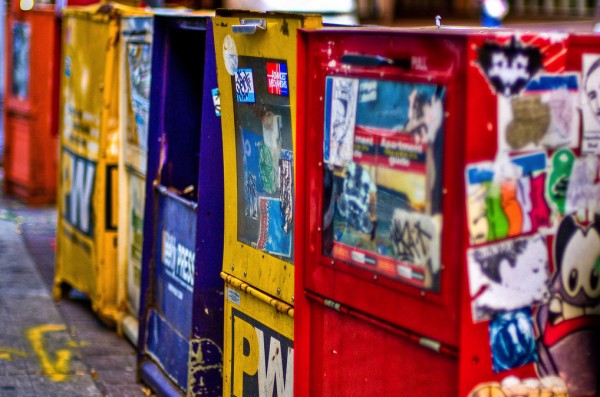[Photo by micholitzii]
PHILADELPHIA MAGAZINE: They burned beautifully for a long time, the City Paper and the Welcomat, later renamed the Philadelphia Weekly. Through the ’90s and most of the 2000s, they both did important, groundbreaking work and cultivated a series of talented writers who hadn’t come to journalism via the usual path. Line cooks and guitarists, labor organizers, wayward lit majors, cross-country bicyclists … they were people who happened to have an eye for a story and an ability to write muscular sentences, but who would have been instantly tossed by security if they’d tried to enter 400 North Broad Street, the white-stone headquarters of the Inquirer and Daily News. And although this wasn’t necessarily in the original plan, the weekly papers also made money. Actually, a lot of money. By speaking truth to power with a swagger and an in-your-faceness that the mainstream press couldn’t match, they attracted a hip young audience that they were able to sell to advertisers—local businesses that couldn’t reach young people any other way. An “alt-weekly” newspaper created its own financial ecosystem; “alt” copy lured “alt” ads. Railing against the establishment wasn’t just a fun thing to do; it was an effective business model. Bruce Schimmel had launched the City Paper with $33,000 left to him by his grandfather, never expecting to make a dime. He ended up a multimillionaire. That’s all over now. The Internet has destroyed the model. Classifieds and sex ads, long the weeklies’ bread and butter, are much more easily accessed on the Web, and the weeklies haven’t kept pace with the online economy. They still exist as print products, but like the city’s two daily newspapers, which have traversed much the same arc in the past five years—panic, layoffs, Do More With Less—they’re pale copies of their former selves. As recently as six or seven years ago, issues of both papers were regularly between 100 and 120 pages thick; the March 22nd issue of the City Paper weighed in at a mere 64 pages, including six pages of sex ads. The same week’s issue of the Weekly was even smaller: 56 pages, including six pages of sheriff’s sale listings. In some ways, the weeklies are actually worse off than the dailies, because old people still read print newspapers, but young people don’t read newspapers of any kind anymore. As the boyfriend of a young Weekly intern recently told an editor there, holding up his iPhone, “If I can’t read it on this, I don’t fuckin’ read it.” It seems pretty obvious that there won’t be two print weeklies in Philadelphia for much longer. MORE

